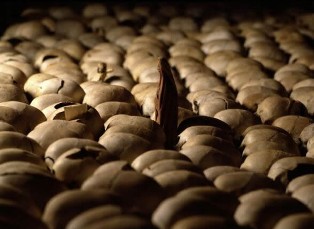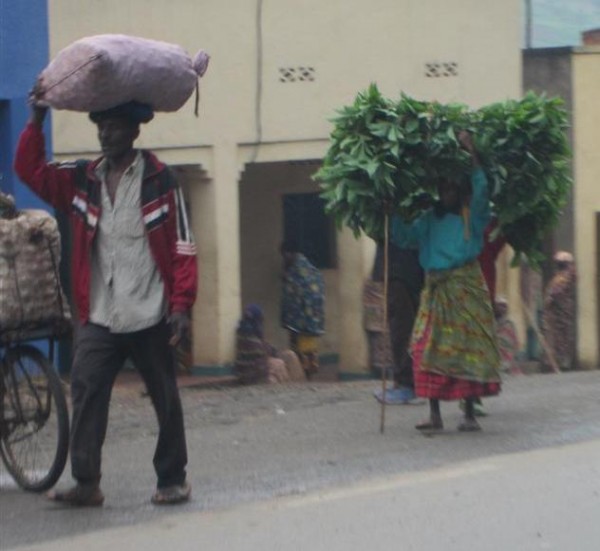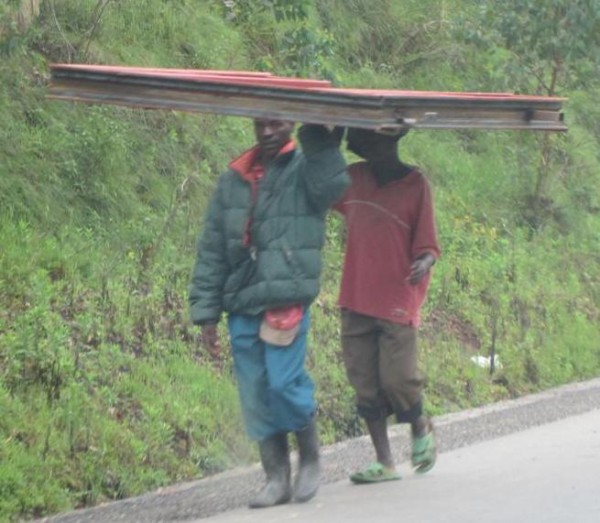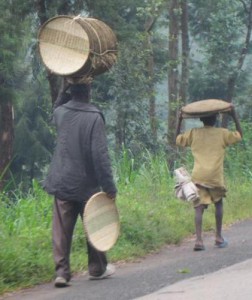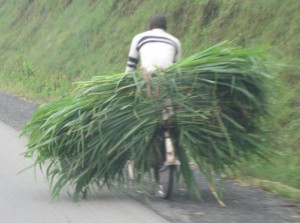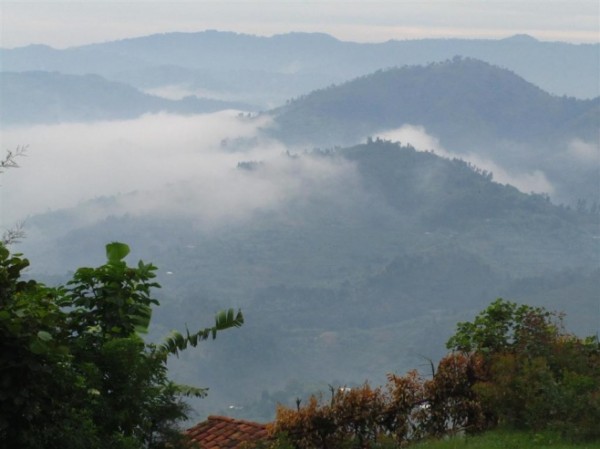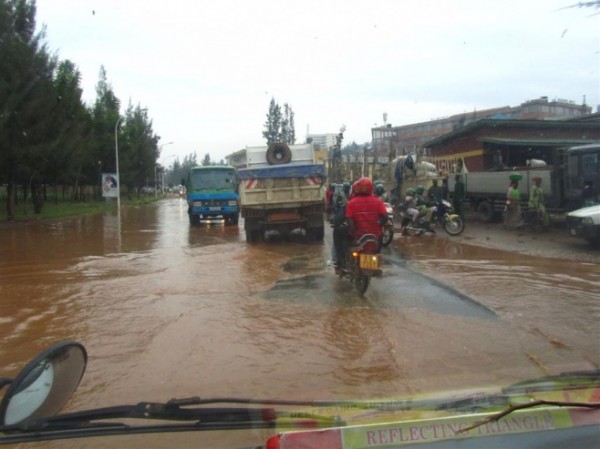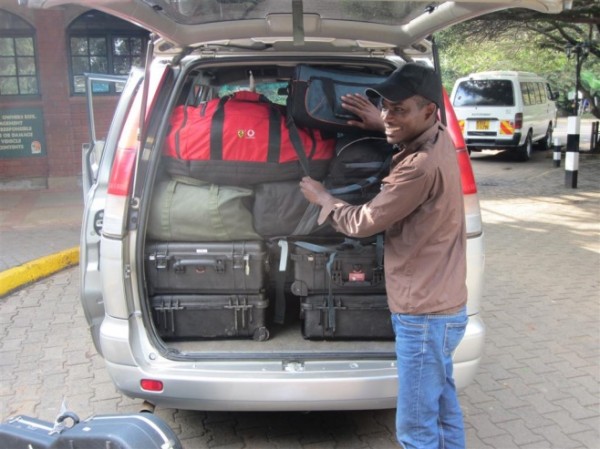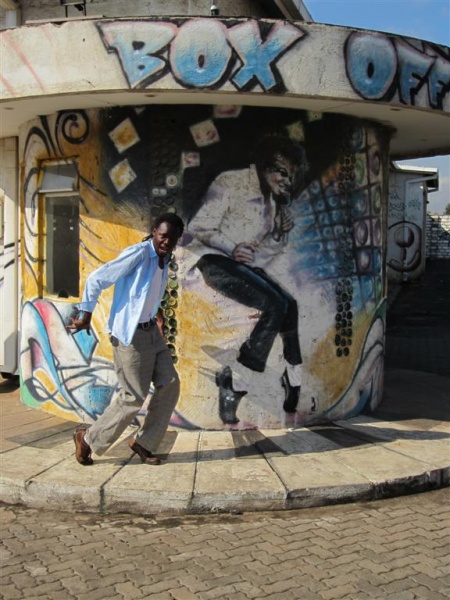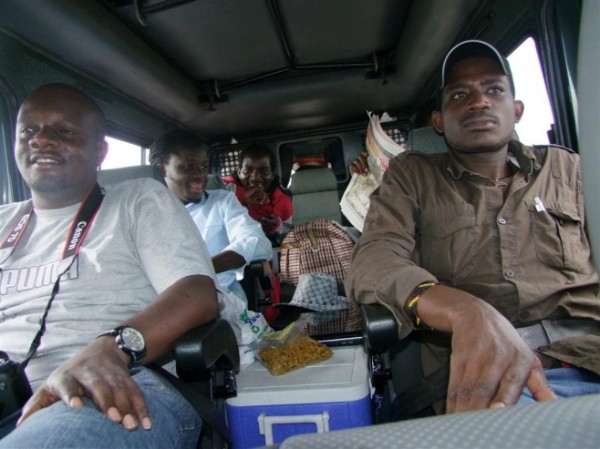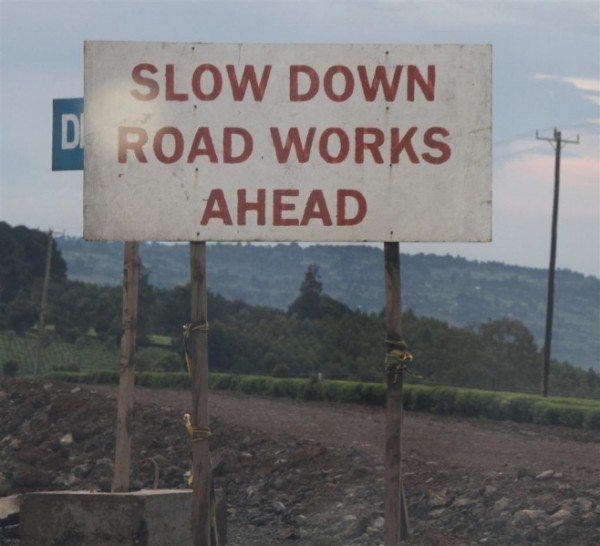Following our recording of the Batwa in Kisoro, Uganda the team travelled back to Kenya to embark on the second phase of the trip. We are recording the music of the Luo in the Nyanza province in the west of the country near Lake Victoria.
We want the focus of these blogs to be about the music. So we’ll keep travel updates to the minimum. In this blog we combine all the fun of travelling from Kisoro back to Nairobi and from Nairobi to Kisumu.
Kisoro to Nairobi: Passport Control, Genocide Memorial and Planes
We left the Traveller’s Rest at 6.30 AM (we told the boys 5:30AM to ensure promptness – and they arrived promptly an hour late, on time. Get it?). Our goal was to hit the Uganda-Rwanda border by the 7AM opening. Let’s describe for a moment “the procedure.” We arrive at 7AM on the Uganda side and first register with the police. They took down our names and passports and wished us well. We then walked over to Ugandan passport control to ‘exit.’ They were not open, however, but arrived about 7:10. We exited and then walked across the 100 metre ‘no man’s land’ to the Rwandan side, leaving the cars to come through separately. We check in with police and then go to Rwanda passport control to enter. This is now 7:20 or so and a big crowd is forming but luckily, as we were so early arriving,we got through okay. By about 7:40 we were done, but the cars were not yet allowed to pass, as the Uganda exit border had not yet opened for vehicles. By about 7:55 it opened and we climbed in our cars and were off again. And, as you might recall, we were now driving on the ‘other side of the road.’
The drive back was beautiful, through the hills of Rwanda. We rushed because we wanted some time in Kigali to visit the Genocide Memorial Museum. We were able to spend about 90 minutes there before heading to the airport. To a person we found it was very well done and very sobering. We’re sure everyone knows more about the Rwandan genocide than we did, but here were some of our ‘we didn’t really know that’ conclusions:
- From launch to peak, a million people were slaughtered in about four weeks while the UN, the Belgian and French forces stood by. They had been warned on the specifics but did nothing. This wasn’t gas chamber horror – this was one child at a time, one machete at a time horror. Blood was all over everyone’s hands.
- The genocide was primarily the Hutu’s against the Tutsi’s, but really all that is a nonsense. While the tribal names had been around for centuries, the modern ‘brand’ of Tutsi and Hutu was established in 1930’s by the occupying Belgians. If you had ten cows or more you were labelled a Tutsi. Less, you were a Hutu. The Belgians relied heavily on the Tutsis, who ended up with all the power and positions under the colonial regime. This is what created the tension with the Hutus more than anything else. But keep in mind – when the slaughter happened it was the decedents of folks with less than 10 cows slaughtering the decedents of folks with more than 10 cows.

- 250,000 people are buried in mass graves 50 metres from the memorial centre. What is hardest to understand, travelling through Kigali, is that the slaughter started here. This is an urban centre filled with incredibly friendly Rwandans. And yet, when the President’s plane was shot down on 6th April 1994, the slaughter began. Roadblocks were set up and maids turned against their employers, friends turned against friends, neighbour against neighbour. One machete at a time. Hutus grabbed Hutus out of Tutsi families and forced them to slaughter every family member. Mothers were forced to kill each of their children before they were slaughtered themselves. Rape was used to humilate and torture. Many rapists had AIDs and knowingly infected their victims. Long after the slaughter was over, the victims of rape continued to die in the thousands from AIDs. But most were burned or hacked to death long before. The ‘lucky ones’ died of AIDs.
- The memorial has a room filled with skulls, a room of femurs, a room of blood stained clothes, a room of video of testimonials of survivors… but the rooms that effect you the most are the children’s rooms. There is a maze of inter-connected cubicles. Each is for one child. One wall is a photograph – floor to ceiling of the child. Another wall has a set of ‘facts.’ Name: Michele’. Age: 26 months. Favourite food: chips (they all loved chips the best). Favourite game: Chasing her brother down the hill. Last Memory: Seeing her Mother hacked to death. Cause of Death: Smashed against a wall. There are about two dozen cubicles. Two dozen Micheles. Each story as horrible as the one before.
As you can imagine, we boarded our flight to Nairobi somberly. We reflected on all the people we met on the long drives through Rwanda and wondered how they now face their neighbours – you are fairly certain every person knows a either victim or an executioner well. To prove the point, we asked our Ugandan driver what he thought of the memorial. He said he now understood how his dad died – he was a Ugandan working in Kigali the day the slaughter happened. He is most likely buried in the mass grave along with 250,000 others.
Nairobi: Observations and Reflections
Arrived safely in Nairobi late Friday night and had an incredibly quick 20 minute drive from airport to hotel, entirely due to the police closing all the other roads for the Presidential convoy which had travelled from the airport just ahead of us. We like the Kenyan President a lot. We waved the Ketebul team off on Friday and the Abubilla team used Saturday to backup drives, write blogs and post ‘excerpts’ on Soundcloud. We took the time to reflect on our travels so far. Ten observations:
- The Casket. We have travelled about 5,000 kilometres so far on African roads for Singing Wells. And we’ve observed Africans carry just about anything on their heads or their motorbikes – fruit of every type, doors, trees, chickens, etc… Our favourite, however, was to be greeted by a motor bike travelling directly towards us with a funeral casket on the ‘back seat.’ Given the safety of the roads, we praised the driver for ‘being prepared.’
- Roadside Occupations: We can also divide the roads into various roadside industries. The road to Mombassa is peppered with small villages selling charcoal at the road side – vans travel up and down the road buying big white bags of charcoal. The road from Kigali to Kisoro is dotted with brick makers – you see them dig up the right earth, make the bricks, dry the bricks and ultimately sell them to the passing vans.
- You ain’t fit ’til you’re Batwa fit: We continue to be amazed at the fitness of the Batwa and continue to tell the story of one young man carrying a generator on his head 800 metres, with 400 metres elevation. We will get T shirts made.
- Francis Playing Kid Golf: Francis is the music leader of most of Kisoro Batwa, knowing all the clans – he is pretty much has the final say in who sings what song. He is also the lead dancer of his group. We will never forget Francis playing what we called ‘kid golf.’ He was carrying his big spear doing his dances, surrounded by all the little children of the village. He would clear space for himself by gently ‘flicking’ the children to the side with his spear. He made a par five on the ‘Crane Song.’
- Willie Bembe’s First Flight: Our sound engineer Willie Bembe enjoyed his first ever flight going from Nairobi to Kigali. He was far less scared of the thunderstorms then the rest of us, but did make things interesting. He almost went to the bathroom in the galley, confusing it for a loo. During a stop-over on the route to Kigali, he almost gave the flight attendee a heart attack by trying to smoke near the back door of the plane while we were refueling. Nice.
- 1-2-3 Clap: We have three cameras and 6 mics. When we mix a DVD, all those elements needs to be synched up, which is quite a complex operation. An easy way to help is to have a ‘clap’ at the beginning of the take so that Pato can line up the three videos and audio. We talk to the musical groups and explain that Pato will say “1, 2, 3” and then clap. They are then able to start the song 3-4 seconds later. Inevitably and consistently, in every village, we end up with the whole village joining Pato in a “1-2-3 Clap”. This is sometimes a hundred people.
- Rwandan and Ugandan Hills: We climbed them. We drove over them. We drove around them. And we recorded music on top of them. But we never got tired of the beauty of the hills around us. In the morning, the clouds were trapped in the valleys and in the evening the clouds climbed a bit to shroud hill tops in mist.
- Power and Locusts and Rain: In Kisoro, we had a power cuts every day. The last day for about 18 hours. In general this is okay as we have a generator for recording. We also had an attack of locusts, however, which occupied our rooms like an invading force. All of us woke up in pitch dark to a massive racket in our rooms. As we fumbled to light our candles, we found ours nets covered in locusts – 100’s. They look bigger and meaner in candle-light. We think the rain drove them inside. It rained a lot. Everywhere we travelled. And flooded the roads and the recording sites:
- Terracotta and Green: The earth was a deep terracotta that seeped up the buildings. Because of the rain, the hills were a deep green and most houses and huts were framed in green. These became the colours of the trip for us:
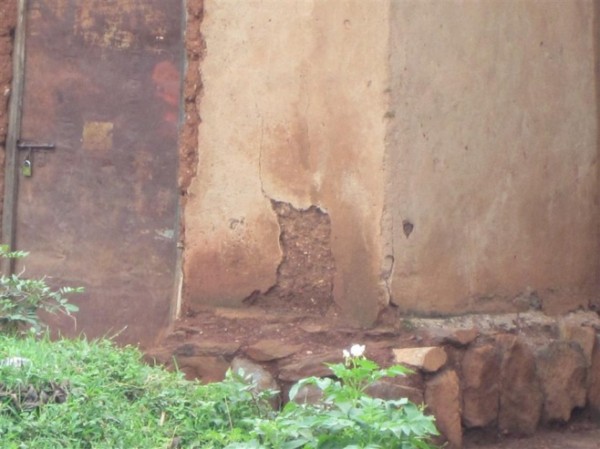
Nairobi to Kisumu
Sunday we were off again. Jamming our Pelicases in the back of the van and heading to the studio where Winyo was doing his Michael Jackson impression:
Once the equipment was loaded, the Ketebul guys got the big truck…
In terms of the trip to Kisumu, a picture is worth a thousand words… we will say no more on the topic:
Tomorrow we get back to recording. That is a very good thing.
The Singing Wells Team
27 November 2011

